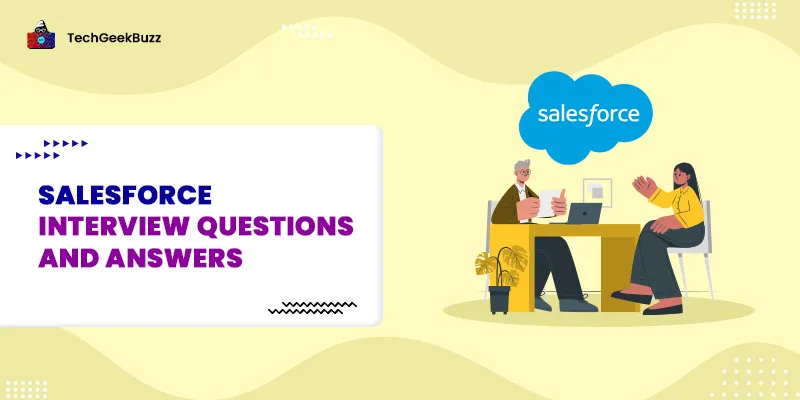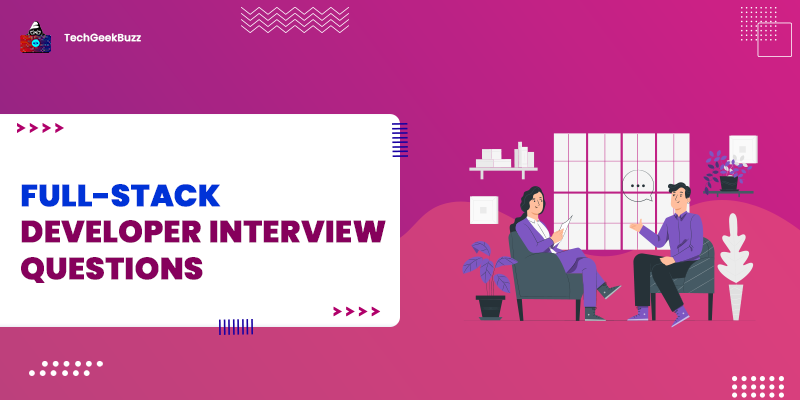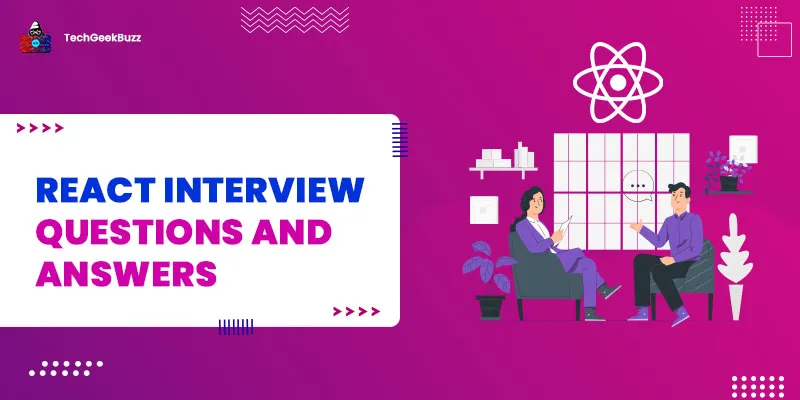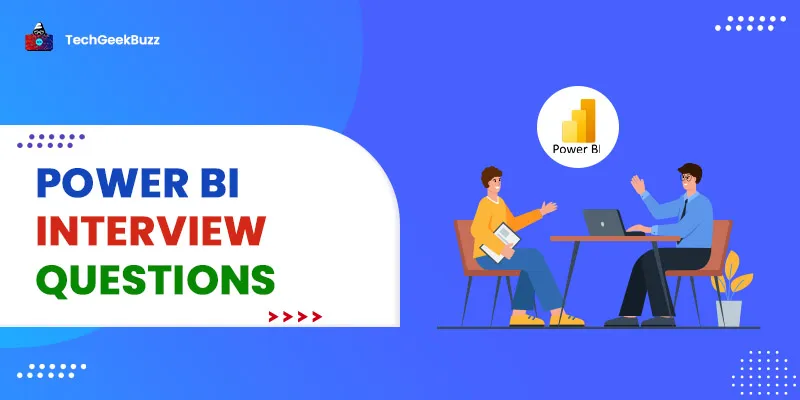Salesforce is the world's leading Customer Relationship Management (CRM) service provider. With a market share of over 40%, this software dominates the sector of Cloud CRM.
To crack Salesforce-related job interviews, look over these frequently asked, most important Salesforce developer interview questions.
Top Salesforce Interview Questions and Answers
1. What is a Salesforce object?
Objects in Salesforce are database tables that are used to hold an organization's data. In Salesforce, there are two sorts of objects. They are as follows:
- Standard objects: These are provided by the Salesforce platform, which aggregates Accounts, Cases, Campaigns, Contacts, Leads, Assets, Reports, and so on.
- Custom objects: Objects produced by developers based on business processes are known as custom objects. It keeps track of critical and distinctive data of an organization, providing a framework for data sharing. Page layouts, custom fields, relationships to other objects, and a custom user interface tab are all included in it.
2. Explain Audit Trail in salesforce?
An audit trail in Salesforce is a unique tool that lets you and other admins track changes in your organization. That way, you'll always know who made a last-minute change to the project. With additional administrators, it is beneficial to the organization.
You may learn about the details of modifications made, the date and time of the change, and the username of the team member who made the changes by using an audit trail.
3. State the difference between a role and a profile.
|
Role |
Profile |
|
The role aids in defining data visibility for a certain user. |
A user's ability to perform things in the organization is limited by their profile. |
|
A role determines the user data a user may see based on the hierarchy. |
Permissions are defined by the profile. |
|
It is not necessary to assign a role to a user. |
Profile definition is required. |
|
Roles are a feature that allows you to manage record access by affecting reports. This will work if the organization's security model (OWDs) is set to private. |
Profile assists in determining record privileges, i.e., assuming the user can view the record, it determines what functions, edits, deletes, and views the user has on that record. It has control over other system privileges such as data export, mass email, and so on. |
4. What is a Salesforce profile? Is it possible for two people to share a profile?
In Salesforce, a profile is defined as a set of settings and permissions that determine what a user may accomplish in the system. As a result, it grants you access to specific Salesforce records. A sales profile, for example, may have access to leads, contacts, campaigns, opportunities, and so on.
Employees in the same department may be allocated similar profiles. Consider the sales profile: it employs a large number of people, each of whom is given the same profile. As a result, many people could share the same profile.
5. What might cause Salesforce data loss?
Many factors can lead to data loss in Salesforce, including
- Changing the date and time.
- Migrating from various data formats to percent, number, and currency.
- Switching from multi-select picklists, checkboxes, and auto numbers to other types.
- Any type except picklist can be changed to a multi-select picklist.
- Except for text, switching to auto-number.
- Changing from the text area to the email, phone, URL, and text.
6. What does a connected app mean?
A connected app is a framework that uses APIs and standard protocols to connect an application to Salesforce. It authenticates, authorizes, and provides single sign-on (SSO) for external apps using standard SAML, OAuth, and OpenID Connect protocols.
Salesforce admins may use the connected app to set up security controls and restrict who has access to which apps.
7. What is a Master-Detail relationship?
The master-detail connection is a parent-child relationship in which the master symbolizes the parent and the detail symbolizes a child. When we wish to regulate the presentation of detailed records based on the value in the master record, we can utilize this relationship.
The Master object has absolute control over the Detail object's actions. The child's survival is predicated on the parent's survival because if the parent is removed, the child is also deleted.
8. What can the user do with a custom object?
The subscriber can execute the following tasks when the custom object has been defined:
- Make custom fields.
- Make connections between the custom object and other records.
- Keep track of tasks and events.
- Create page layouts.
- Make a separate tab for the custom object.
- Analyze data from custom objects.
- Create reports and dashboards.
- Custom tabs, custom apps, custom objects, and other relevant components can all be shared.
9. What do you mean by a sandbox?
A sandbox is an exact copy of a database that can be used for testing and development purposes. It's really useful because it allows you to try out new ideas on a replica database without affecting the original. Sandboxes are of four sorts:-
- Developer Sandbox - This isolated environment contains a copy of the production org's metadata and is meant for both development and testing.
- Developer Pro Sandbox - It is similar to the developer sandbox but with the ability to hold larger datasets.
- Partialcopy Sandbox - It is only meant to be used for testing purposes. It contains a sample of the data and information from the production org.
- Full sandbox - It is solely meant to be used as a testing environment. It includes all of the production org's data, such as objects, attachments, and metadata.
10. Explain trigger.new?
Trigger.new delivers a list of new records introduced to sObjects recently. The records that have not yet been stored in the system are returned to the user. The sObject list is only available in insert and update triggers, and records can only be updated before. trigger.
11. What are the important features of Salesforce CRM?
Salesforce is the most common solution for businesses as it features all the necessary elements that are required to run the businesses. Salesforce CRM comes with the following features:
Contact Management: Salesforce CRM provides access to the critical data of the customer, thereby ensuring hassle-free contact management.
You can have complete information about your customers, including insights, engage-enhancement strategies, social data, and their behavior regarding any service or product.
Also, cloud-based contact management lets you collaborate with the organization. You can share your insights and other important things to create a knowledge-sharing workspace.
Quote management: With Salesforce CRM, you can simplify your sales and business process by forecasting and tracking productivity.
With quote management, you can keep track of your products (like their standard prices, quantities, product codes, and so on), schedule revenue as well as keep a check on the quality of the products. There's a built-in quoting mechanism to automatically quote client data.
Lead management: Lead management provides access to up-to-date contacts and allows you to make use of the sales path. Working as a fast-lead converter machine, the CRM app lets you know the original source of the leads.
Easy sync and file sharing: It is easy to share files, discuss them and publish them to track the content. With Salesforce, you can quickly find what you are looking for and share it securely.
12. What do you mean by dashboard?
A dashboard is the pictorial representation of the report. It helps show the data from the source reports in the visual components. These components are the screenshots of performance indicators and key metrics. A single dashboard can easily display 20 reports at one time.
13. What are the benefits of using Salesforce CRM?
Salesforce CRM provides the following benefits:
- Seamless communication by using automation tools.
- Easy data syncing from different applications.
- Easy understanding of customer's activity.
- Comes with Omnichannel feature.
- Consistent engagement.
- Provide insights into the data analytics tools .
14. What do you mean by Apex in Salesforce?
Apex is an object-oriented programming language that allows developers to execute flow and transaction control statements on the Salesforce platform.
With Apex, developers can create visual force pages, button clicks, and more from the business perspective. All the Apex codes run on-demand and are written and saved by the developers.
15. What do you mean by a junction object?
A junction object helps in building many-to-many relationships between the objects. Let's explain this with an example; consider a job application, where one job is linked to many candidates, or a candidate can apply for different positions.
Here the 'job application' is referred to as a junction object and can connect various data models (job seekers).
16. How many types of reports are present in Salesforce?
Reports give insights into the work progress and help businesses make informed decisions about revenue, expenditure, and other things. There are four different types of reports; they are:
- Matrix Report: A report generated by grouping the records by rows and columns is called a matrix report. It is used when you want data in two different dimensions that are not related to each other.
- Tabular Report : A report that provides details of the business in a tabular format is called a tabular report. These kinds of reports are used when you want a simple list.
- Summary Report : This report provides a listing of data with subtotals and groupings. It is used when the total of any list is needed or when you want to create a hierarchically grouped report.
- Joined Report: This report is the combination of two reports (like matrix + summary report).
17. What are different validation rules in Salesforce?
Validation is all about the mixing of formulas or expressions that evaluate data in one or more fields to meet the set standards. Based on the evaluations, it returns either a 'true' or 'false' value. Also, the validation rules help in displaying the error message to an invalid value.
Validation rules also help in enforcing the integrity constraints of data; you can create the validation rules for fields, objects, and campaign members.
18. What do you mean by record types in Salesforce?
Record types in Salesforce allow you to associate different business processes and help show page layouts to different users depending upon the user profile.
Administrators can use record types with user profiles so that different users will be able to see different page layouts and page values. Some of the benefits of record types in Salesforce are:
- Simple administration because of few fields.
- It modifies user interaction experience as per specific needs.
19. How does a Salesforce release work?
As a SaaS platform, Salesforce automatically delivers updates to your system. The major updates happen three times a year, while the minor ones occur in between. The major updates are called Spring, Summer, and Winter updates, which are rolled with a plethora of features for the salesforce products.
20. What is the difference between metadata and data?
Metadata is related to the configuration, fields, code, page layout, and logic that goes into constructing the information architecture of your salesforce environment.
Data, on the other hand, is related to the record on which a business relies. It may consist of users, accounts, contacts, and so on.
21. What is the Skinny table?
A skinny table is used for accessing the fields that are frequently used to avoid joins. This improves the performance of read-only operations like list views, reports, and more.
Skinny tables are very effective because they are always in sync with the source tables. However, you need to contact customer service if you want to create a skinny table; you cannot do it on your own. Here are a few things to keep in mind if you want these tables:
- It can contain up to 100 columns.
- It cannot contain fields from other objects.
- They are copied to the full sandbox organization, but for other types of sandboxes, they are not copied into the organization.
22. What is the difference between SOQL and SOSL in Salesforce?
|
SOQL (salesforce object query language) |
SOSL (salesforce object search language) |
|
Using this, we can search only one object at one time. |
Here, we can search multiple objects at one time. |
|
We can query on all the fields of any database. |
We can query on fields whose data type is text, phone or email. |
|
DML operations are performed on query results. |
DML operations are not performed in the search results. |
|
Synchronous indexing. |
Asynchronous indexing. |
|
SOQL is used in classes and triggers. |
Can be used in triggers but cannot be used in classes. |
23. What are the actions in the workflow?
Some of the common actions in the workflow are:
- Field updates
- Tasks
- Outbound messages
- Email alerts
24. Is the rollup summary field possible in the master-detail relationship?
Yes, it's possible in a master-detail relationship.
25. How many lookup relationship fields are created in an object?
We can create a maximum of 40 lookup relationship fields in an object.
26. If you delete the parent record from MDR, what will happen to the child?
In this case, the child will also get deleted.
27. How can you create an MDR on the objects we already have on records?
First, you need to create LR between the two objects. Next, you need to connect the child to the parents. Lastly, convert the field type from LR to MDR.
28. Can you delete a user in Salesforce?
No.
29. Can you change the license when creating a profile?
No.
30. What do you mean by object relationship overview?
It means creating a link between the custom object and the standard object recorder in the specific list. This will help in identifying the product defects.
31. Explain the object relationship overview?
Object relationship overview creates a link between the custom object and the standard object record from the related list. This further helps in identifying product defects.
32. How can you create many to many relationships in Salesforce?
Many-to-many relationships will help create a relationship between two objects. Using this, you can connect each record of an object with multiple records of other objects and vice-versa.
33. What is a permission set?
A permission set is the collection of permissions or settings used to extend the user's functional access without changing the real profiles. You can use permission sets for various users to extend the functionality.
34. Explain the fiscal year in Salesforce?
The fiscal year is the starting and ending date of a company's financial year. It is of two types: Standard fiscal year and custom fiscal year.
35. What is the difference between the data table and page block table tags?
Page block:
It should be defined under Apex:page block or apex:PageBlockSection. It uses Salesforce standard CSS to design a visualforce page. Here, the column header will be displayed automatically. It has the required attribute "value."
DataTable:
It doesn't have to be written inside the PageblockTable or Page block. You don't need the required value. We need to specify columns explicitly. No value is required.
36. Can you schedule a dynamic dashboard in Salesforce?
No.
37. How many ways can you share a record?
You can share a record in three ways:
- Role Hierarchy: If you add a user to the role, the user who is above in the role hierarchy will give read access.
Setup>manage users> roles> setup roles> click on ‘add role’ > give name and save.
- OWD : It defines the baseline setting for the organization; it also provides the level of access to a user who sees the other user's record.
OWD can be Private, Public Read Only, and Public Read and Write.
Setup> Security Control>Sharing> Click on ‘Edit’.
- Manual Sharing: Manual Sharing is sharing a single record with a single user or group of users. We can see this button detail page of the record, which is visible only when the OWD setting is private.
38. Can you create your custom logo while creating applications?
Yes, users can upload their custom logo documents and choose the logo for the organization.
39. Where can you use Apex?
You can use Apex in the following ways:
- To create web services.
- To perform complex validation over multiple objects.
- For creating custom transaction logic.
- For attaching custom logic to another operation.
40. How does Apex Work?
For this, the platform application server has to compile the code in an abstract set of instructions, which can be understood by the Apex runtime interpreters. The compiled code is stored in metadata.
41. Where can you use Apex?
We can use Apex in the following ways:
- To create web services.
- To create an email service.
- To perform validation on multiple projects.
- To create complex business processes that are not supported by the workflow.
- To create custom transaction logic.
- To attach custom logic to another operation.
42. What are different ways to call the Apex Class?
Some of the ways in Salesforce to call the Apex Class are:
- From developer console
- From JavaScript links
- By using Trigger
- From homepage components
- From another class
- From the visual force page
43. What is Apex's email service?
Email services are the automated processes that use Apex classes to process Headers, Attachments of inbound email, and content.
44. What is Apex Scheduler?
The Apex Scheduler invokes the Apex classes to run at a particular time. Anyone who wants to schedule their class has to implement the schedulable interface. This interface has various methods:
Public void execute(schedulablecontext sc) Public class mySchedule implements schedulable { Public void execute(schedulablecontext sc) { Account a = new Account(Name = ‘Faraz’) Insert a; } }
45. What do you mean by multitenant architecture?
Multitenant architecture is a cloud's fundamental technology that helps share the IT resources securely and cost-effectively.
46. Can you list some data types that a Set can store?
The Set can store the following data types:
- Subjects
- Primitive Types
- Built-in Apex types
- Collections
- User-Defined types
47. What is Bulkification best practice?
To avoid bulkification, you must avoid using the index values like Trigger.New[0]. Also:
- You need to use it for every loop, whether you have one record or many.
- You must not use SOQL in the loop.
- You should not use SoS and DM in the loop.
- Need to store data in collections so that the code will work for singles.
48. How can you perform DMS partially?
By using database.insert(list,false);
49. What is the syntax of the SQL statement?
SELECT field1, field2,.... FROM Object_Type [WHERE condition]
50. Explain GROUP BY with syntax?
You can use Group By with the API version 18.0 to aggregate functions like max() and sum() to summarize data. Group By also lets you roll up queries rather than having to follow the individual records.
51. What is a Blog variable?
The blog variable is the variable that collects binary data. tostring() converts the blog back into the string.
string string1='test string';
Blob blob1 = Blob.valueof(myString);
String String2 = myBlob.toString();
???????System.debug(String2);
52. Can you list some things which you can customize on the page?
We can customize things like Fields, Buttons, Related lists, and Custom links on page layouts.
Conclusion
Salesforce has become the backbone of every company's sales and marketing automation initiatives, and the need for qualified Salesforce administrators is at its peak.
These top important Salesforce interview questions and answers will assist you in efficiently preparing and doing well in Salesforce interviews .
People are also reading:





Leave a Comment on this Post